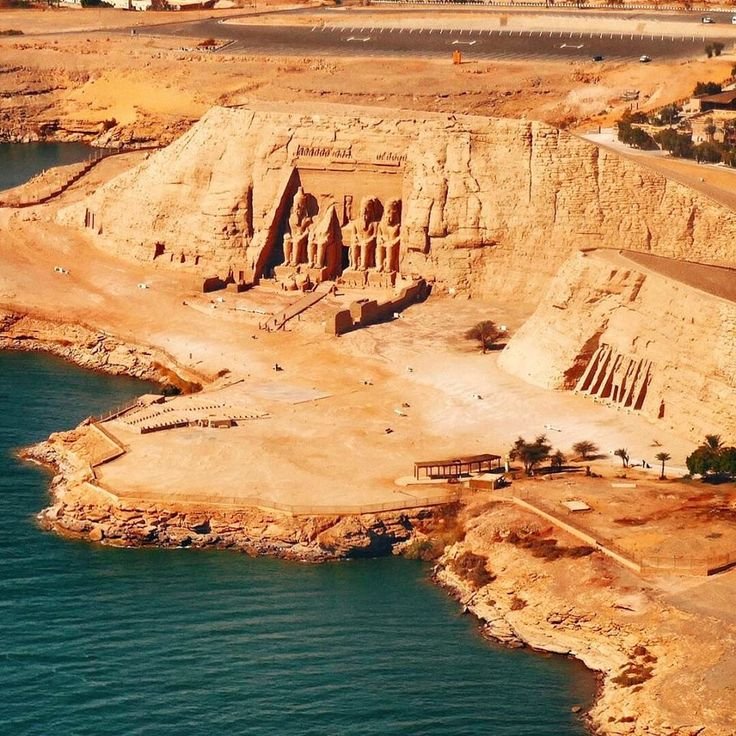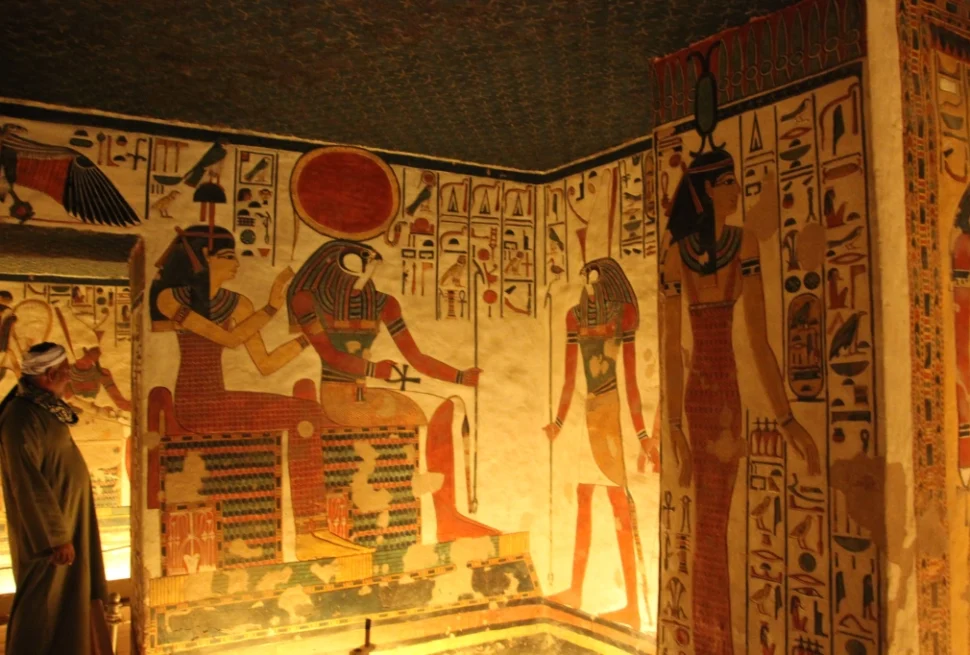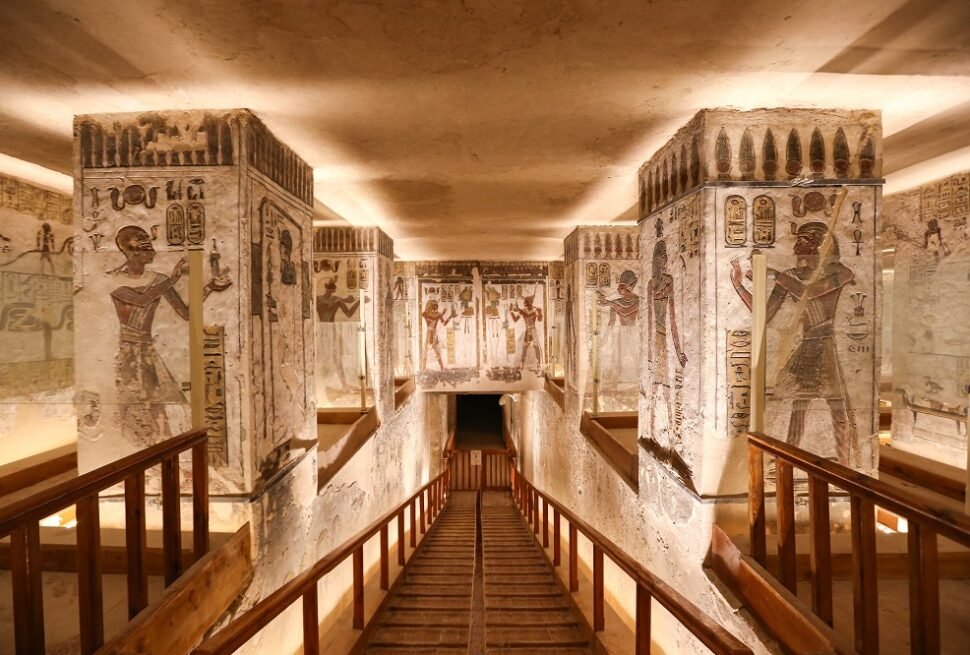One of the very few Egyptian monuments that can still raise such awe for ancient Egyptian culture is the Abu Simbel Temple. This Nubian temple complex situated near Egypt’s southern border was carved into the rock during the reign of Pharaoh Ramesses II in the 13th century B.C. Its colossal scale, intricate carvings, and equally interesting history continue to fascinate all who come forth to behold it.
Historical Significance of the Abu Simbel Temple
Built in the years 1264 to 1244 B.C., the temple was constructed in the hope of commemorating Ramesses II’s victory at the Battle of Kadesh and to impress upon Nubians Egypt’s strength. The temple complex was two temple buildings: the Great Temple, built to worship Ramesses II himself, and the Small Temple, to his wife Nefertari, and the goddess Hathor.
Historical Context: Who Built the Abu Simbel Temple?
The Abu Simbel temple was built by the famous ancient ruler Ramses II, considered by many to be one of the strongest and most famous rulers of antiquity. Ramses II ruled for sixty-six years (1279-1213 BCE) into the 19th Dynasty of Egypt. His name is primarily associated with military campaigns for Egypt, building projects across Egypt, and all campaigns for the eternal glory of himself.
Carved into a sandstone cliff on the western side of the Nile, the temple of Abu Simbel was a power statement from the south to the Nubians and a place for worship of Amun, Ra-Horakhty, and Ptah. Also worshipped here was Ramses II, deified.
Architecture of Abu Simbel
The Abu Simbel complex is composed of two main temples:
1. The Great Temple of Ramses II
The main part of the Grand Temple in Abu Simbel is dedicated to the gods Amun, Ra-Horakhty, and Ptah and Ramses II himself.
Façade: The façade has four colossal statues of Ramses II, each about 20 meters (66 feet) tall, glorifying the Pharaoh, who sits on a throne wearing the double crown of Upper and Lower Egypt.
Entrance and Interior: The entrance opens into a huge hypostyle hall with eight massive Osirid pillars, each decorated with statues of the Pharaoh as Osiris, the god of the afterlife.
Chambers: There are several chambers within the temple, ending in the sanctuary, where there are seated statues of Ramses and the three principal gods.
Carvings and Reliefs: The walls depict elaborate reliefs of scenes from Ramses II’s military campaigns, most famously, the Battle of Kadesh.
2. The Small Temple of Nefertari
Next to the Great Temple is the Small Temple dedicated to Queen Nefertari, the favorite wife of Ramses II, and the goddess Hathor.
Façade: The façade has six statues: four of Ramses II and two of Nefertari. Extraordinary offers of equality between king and consort are rarely seen in Egyptian art: Nefertari’s statues are the same size as the king’s.
Interior: The temple has a central hall with columns headed by Hathor, and the wall reliefs show the queen and the goddess.
Architectural and Astronomical Marvels
One of the most stunning features of the Abu Simbel Temple concerns its solar alignment. Twice in a year, on February 22 and October 22, the first rays of the awakening sun enter the Great Temple and illuminate the statues of Ramesses II and gods Amun, Ra-Horakhty, and Ptah within its innermost sanctuary. The Sun Festival speaks highly of the ancient Egyptians being well versed in astronomy and being able to creatively employ natural celestial events into their architecture.
The Relocation of the Abu Simbel Temple
The construction of the Aswan High Dam threatened the Abu Simbel in the 1960s. The rising waters of Lake Nasser would surely have flooded the temples. To rescue this precious heritage, the World Heritage Committee was formed under the leadership of UNESCO. The temples were exquisitely dismantled into huge blocks, each weighing from 20 to 30 tons between 1964 and 1968. These blocks, after having been moved 65 meters higher and 200 meters back from where they had originally stood, could be reassembled with incredible precision.
Astronomical Significance: The Sun Festival Phenomenon
One of the most incredible features of Abu Simbel is the solar alignment.
On two occasions during the year, February 22 and October 22, the sun’s rays penetrate inside the temple in the dawn hours to illuminate the statues of Ramses II, Amun, and Ra-Horakhty inside the sanctuary.
A curious effect is that Ptah, being the god of this world, remains in the shadow, symbolic of his being linked to darkness and death.
The Sun Festival is a big cultural event that draws thousands of tourists each year and vividly demonstrates the astronomical precision of the ancient Egyptian builders.
UNESCO’s Rescue Operation
In 1964, UNESCO started an international campaign to save the temples of Abu Simbel.
The temples were broken down into over 1,000 blocks with weights up to 30 tons each.
To relocate them 65 meters higher and 200 meters inland, they were then perfectly reconstructed within an artificial mountain that was designed to seem like the original setting.
This operation, which ended in 1968, is considered one of the greatest achievements in the history of archaeological preservation.
The Setup of the Abu Simbel Temple Today
Today, the Abu Simbel Temple continues to tickle the fancy of tourists; hence the many clusters of visitors from all over the world. The place can be accessed by road coming from Aswan; also, there are flights available from Cairo and other major cities. On entering the temple, one can witness the colossal statues and participate in the Sun Festival on the allocated dates. The visitor center gives further information concerning the history and significance of the temples.
Visiting Abu Simbel Today
The temple of Abu Simbel lies some 280 kilometers down south from Aswan, almost on the Sudanese border. One can get to the site by:
Flight: Daily flights operate from Cairo and Aswan.
Bus: Organized day trips from Aswan are available, leaving early to ensure arrival at the site before the midday heat.
Conclusion
The Abu Simbel Temple is a testimony to the grandeur and ingenuity of ancient Egyptian civilization. In its immense size, fine artistry, and connection to heavenly events, it displays the unexplored capability of its creators in the finer arts. The 1960s relocation of the temples, in the meantime, testifies to the very same commitment of humankind to preserving cultural heritage. As they stand before the towering statues and move through intricately decorated chambers, a visitor is no longer a foreigner in an ancient land but stands with the men of history in witnessing ancient Egypt at its power and glory. Take the adventure of visiting Aswan attractions and the Abu simple temple now with Step To Egypt.




